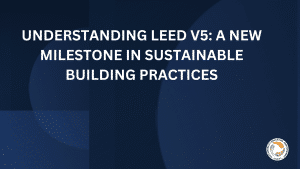A Quick Look at the Impacts of Impact Investing
By Daniel/ March 3, 2021
The recent events on the stock market have gotten hundreds of new ‘retail investors’ interested in participating in the trading stocks since the beginning of January. With a bit of disposable income, a lot of them were able to make money off companies, namely GameStop, simply by driving up the price to dizzying heights. This was achieved by plastering their beliefs in the company anywhere they could in what has been deemed by many to be a coordinated market manipulation tactic among small investors. Whether that’s true or not will not be discussed here – the flaring interest in investing drawing in this many people, however, could potentially trickle over into impact investments.
Impact investing is a simple concept to understand and a whole breakdown of what it is can be found here. Without diving in too deep, impact investing simply involves an individual investing in a company that they believe will cause an environmental or social change. Of course, a financial gain is certainly within question (and is a driving force for investors anyways), but the primary focus for this concept is the actual impact a company will have. Unfortunately, there is never a ‘sure thing’ for causing this kind of mobility. It is still risky to invest in companies that specialize in technology, medicine, or social progression despite their genuine intentions and plans to benefit society.
This all sounds great on paper: invest in a company that’s promising (for both society and budgets), wait for the money to roll in, and profit off progress. That’s an oversimplification of the concept but that’s the general idea. In that case, if impact investing is so great, why doesn’t everyone do it? Let’s examine the benefits and drawbacks of impact investing and how the resulting impacts are calculated when analyzing a company’s success or failure. Along with these aspects, this will also help determine whether businesses in this sector are doing enough to properly report their status.
There are six main stages that be used to analyze the effects of impact investments: Size and Overall Reach, Identifying Desired Outcomes, Calculate Tangible (financial) Value of Outcomes, Reorganize Around Risks, Estimate Terminal Value, and Determine Social Impacts/Returns on Investment.
Most impact investments start by looking at the potential for an investment to reach a certain amount of people. Usually, a wider reach would result in a better investment, though that may not always be the case. If a smaller population can be impacted positively to a greater effect per person than a larger reaching project, this could be a better investment. Plus, if an impact by one investment is less useful to the population despite a decent population size being impacted, this would also make such an investment less viable.
Identifying desired outcomes is an important step in choosing impact investments because project research can dictate whether a goal is realistically achievable or not. Having high hopes for social or environmental impacts isn’t wrong, but not performing due diligence is. Being able to see that a company has set realistic goals for itself while producing preceding evidence on their project make a huge difference when investing.
The third step of calculating the value of said outcomes is perhaps the most vital step. Some studies from impact investments have found that although an outcome is favorable, the process of getting there makes for an unfavorable bottom line when compared to the outcome. This coupled with potential ethical dilemmas can further decrease societal benefits of a project. Anchor studies can be performed to prove or deny concerns based on these merits.
As these anchor studies come to a close, possibly rendering the project favorable overall, its time to assess possible risks that surround carrying out a certain project. Initial calculations will have to be adjusted according to impact-probability and impact-realization scales – this helps scale down valuation to potential vs. actual investment values (potential will always be higher because risks are not involved).
Estimating terminal value for impact investments is used for similar reasons to regular investments. Essentially, it is used to define a project’s value beyond simply cashflow. This becomes relatively complex, but it is important for impact investments because it helps in forecasting a project’s growth or value years or even decades out using current knowledge.
Finally, the most important assessment: whether such a project was financially and socially substantial. To accomplish this, the social gain is compared to each dollar spent, basically a social return on investment analysis. Even if a report finds some project did not meet its potential, it still has value being given the progress and amount of data collected.
This was not a wholly comprehensive guide on what impact investments are. It provides, at the very least, an apt summary of how they are researched, designed, and implemented from a business standpoint. Hopefully, this short overview can assist the average person in understanding such investments so that they can do a bit of research on their own too.













